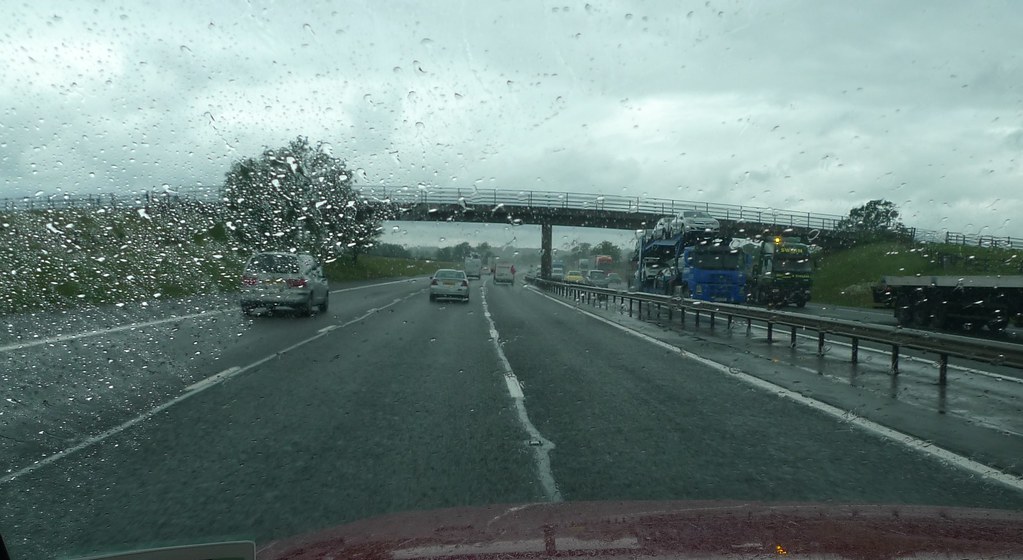Heavy Wind Driving During A Road Trip

Each off-season brings up many surprises for the motorists. Frequent temperature changes lead to local destruction of the asphalt. Pits are formed, and cars get into them at full speed, which not only negatively affects the integrity of the suspension units, but also affects the directional stability. Sideways appear, on a slippery road they can lead to demolitions. However, the worst thing for a driver is a strong crosswind. It happens that the wind literally “blows” the car off the track. Here are tips for getting through such situations at home, or when you take 7 passenger vehicles for rent.
Frightening wind
Often, motorists at high speed do not consider wind loads. It is believed that this is the prerogative of aviation, however, for crossovers, SUVs and, in general, passenger cars with a high body and high windage, side gusts of wind can be fatal. This happens, as a rule, when three frightening factors combine – ice, wavy broken asphalt and strong side gusts of wind.

Intercity roads are usually lined with a forest belt, which prevents strong winds and snowstorms. But often the forest belt has breaks, the road passes through an open field, and in such borderline places one can see snow drifts that melt, and water is absorbed into the road, leading to its even greater destruction. Here the pockets of broken asphalt are formed.
As a result, when the wheels of the private or rental car knock on the pits, their grip is briefly interrupted, and this is enough on icy road to push the car off the trajectory. The strong wind can give such a push. The car body is experiencing a sharp increase in air pressure from the side, and the car crawls to the edge of the strip.
Tips for driving in the wind
- Avoid using a roof rack to transport cargo in windy conditions, and do not transport bicycles on the roof or trunk of a car. Remember that the weight attached to the body creates unnecessary aerodynamic air resistance. In windy weather, the load on the roof can become the reason for the instability of the car on the road. This effect is based on the same air currents that create lift during takeoff of a heavy aircraft.
- If you drive a trailer, truck, bus or any other high-dimensional transport, remember that crosswinds are also a great danger for this type of vehicle. The fact is that even despite the large weight of the overall vehicle, the side wind is able to easily and quickly literally overturn the car onto the road.
- Do not drive close to trucks carrying various open loads fastened by winches, ropes, etc. The fact is that strong winds can overturn a load that can fall on your car.
- Avoid driving in a hurricane and in any strong wind on large open sections of the road. As a rule, in open areas the wind speed can be significantly higher than in the city, where buildings protect the roads from wind force. However, be prepared for even greater gusts of wind when driving through freestanding high-rise buildings.
- In strong winds, never take both hands away from the steering wheel. If your car is equipped with a manual transmission, then as soon as you change gear, always return your hand to the steering wheel. Please always mention the most suitable for you type of transmission in the car rental office when you rent a car.
- Try not to overtake other cars, as in windy weather this maneuver can make the car more unstable on the road.
- Increase the distance to other vehicles that may suddenly lose control due to strong winds. Long distance on the road will greatly expand your field of vision.
- Watch out for gusts of wind when driving on high bridges and overpasses. Also, be careful when various objects or litter lie on the road surface. Remember that strong winds can lift even heavy objects or litter into the air, damaging your vehicle.
What to consider when driving in wind?
- The sound signal of the car may be inaudible due to strong winds.
- The wind rarely blows with constant force. Most often, it blows in strong gusts. You need to be ready for it and steer in time to stay in your lane.
- When driving out from behind a forest belt or fences to an open section of the road, you need to be prepared for a sudden side wind blow.

Experiments on the tracks showed that at a wind speed of 25 m/s, an additional lateral force of about 300 kg acts on a passenger car. On a wet or slippery road, this is quite enough to push a car into the oncoming lane or into a ditch. In order to prevent this from happening, you need to take into account some important features of driving in a squally wind. Remember them in difficult situations, especially in unknown terrain.
